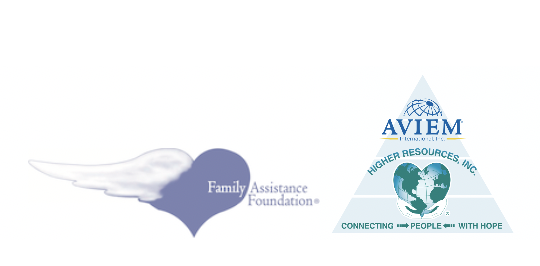The Institute's new Consciousness@Work series intends to promote awareness of what it means to be awake and conscious in and around the work environment, i.e., ways in which human beings, their feelings, and psychological needs, take precedence over money, tasks, processes, and procedures. Recently, Mike Kavanagh, a Foundation leader in Perth, Australia, shared an exchange between him and a journalist, which we think provides an example of being conscious of what matters most. With the permission of Mike and Bella, the journalist he corresponded with, we share their exchange.
The story pertains to Colgan Air/Continental Flight 3407, which crashed on February 12, 2009, in Buffalo, NY, in the US. In memory of the lives lost and the families left to mourn them, we decided to share this story near the thirteenth anniversary of the crash.
Mike’s Email
In March 2021, an article was published in the Civil Aviation Safety Authority's magazine Flight Safety Australia on aircraft stalls. There was a reference to the 3407 crash with the comment "… crashed, killing everyone on board." No acknowledgment of Doug Wielinski's death.
Just before Christmas, I was reading the latest Australian Aviation magazine, which also had an article referring to 3407. The author wrote about the crash"…killing 49 passengers and crew, and one person inside the house". I checked the author on LinkedIn, and she had completed her Bachelor in Communications in 2020 and joined the publisher last year. I wrote a quick email to the editor commenting on Bella's accuracy in that comment. I also referred him to your book review in the FAF Newsletter Summer 2020.
I received a reply from Bella ….
Hi Mike,
My name is Bella, and I am the journalist who wrote 'Live for the Moment' in the latest Australian Aviation magazine edition.
My boss, Adam, just forwarded your kind email to me and I would just like to say a huge thank you for your words.
As a journalist – specifically one who graduated from uni last year – it is refreshing to hear what resonates with people and what words and details actually matter.
While I don't actually know the severe details of that day, I am so glad I was able to report on even the smallest of it. After writing stories all day, every day, you sometimes forget that there are real people behind those words, so thank you for reminding me.
I will definitely have to get a copy of that book!
Again, thank you for the email. It is much appreciated.
Have a wonderful Christmas, and God bless you and your family.
Warm regards,
Bella Richards
Journalist – World of Aviation, Space Connect & Australian Aviation
Second Assaults
In Human Services Response™ (HSR) Training, we define second assaults as unintentional harms to survivors of traumatic events. We borrow the term from the legal field. There are numerous examples where crime victims are questioned by police officers, first responders, and various helpers as though they are somehow responsible for their fate. There are countless other examples where even one's minister or family members say and do things that further victimize people who are already suffering.
Over the years of interviews with survivors, we have observed numerous second assaults—preventable harms that happen due to company employees' lack of training and understanding about crisis and traumatic stress. In HSR™ training, examples of second assaults provide learning opportunities to prevent similar mistakes in the future. What company response teams have no control over, however, is the harm done by journalists and media representatives in their reporting or “misreporting” of facts about the tragedy. Often stories are written and reported that invalidate survivors who are already struggling with enormous losses.
Reporting that 49 people died because of the crash is an example of avoidable psychological injury, a proper second assault. While estimations involving some subjects, i.e., tax estimates, cost estimates for goods or services, are acceptable, estimates in reporting the number of deaths resulting from the crash of Flight 3407, or any tragedy for that matter, constitute second assaults. Anyone who knows the crash story is aware of the losses that Karen Wielenski and her four daughters sustained when the aircraft struck their home, killing their father/husband and destroying their personal belongings. After that, the airline refused to extend the same services offered to the other families after the crash.
The court case that followed lasted for several years and brought another real, long-lasting trauma. The psychological injury heaped on the Wielenski family is impossible to articulate accurately. At the Foundation, we congratulate journalist Bella for her careful reporting of the number of deaths known at the time of the accident. We thank Bella for using correct numbers and, in doing so, honoring another life that was taken in the crash and respecting the mourning of his wife, four daughters, and all who loved Doug.
From all of us at the Foundation, we extend our deepest sympathy to all whose loved ones perished in the tragedy. We also express our sincerest appreciation for all that the families have allowed us to learn from them about improving future responses, in the aftermath of this enormous tragedy.

